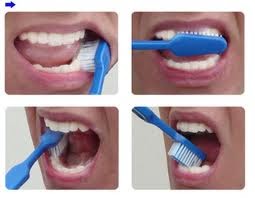At what age does gum disease generally
start?
Gum disease can start at any age. Children and teenagers who have diabetes are at greater risk for gum disease than those who don't have diabetes.
How can I help prevent dental problems associated with diabetes?
First and foremost, control your blood glucose level. Then take good care of your teeth and gums, along with regular dental check-ups every six months.
Additional Oral Care Tips for Those with Diabetes
Gum disease can start at any age. Children and teenagers who have diabetes are at greater risk for gum disease than those who don't have diabetes.
How can I help prevent dental problems associated with diabetes?
First and foremost, control your blood glucose level. Then take good care of your teeth and gums, along with regular dental check-ups every six months.
Additional Oral Care Tips for Those with Diabetes
- Have a dental checkup every six months, or as often as indicated by a professional.
- Tell your dentist or hygienest that you have diabetes and any other medical condition.
- Brush for two minutes a day with a toothpaste with an antigingival/antibacterial ingredient to help prevent gingivitis and one that accepted by the American Dental Association.
- Contact your dentist or hygienist if you experience any of these signs of gum disease:
- Gums that bleed or are red, puffy or swollen, or sore
- Gums that have pulled away from the teeth
- Changes in the way your teeth fit together when you bite
- Pus that appears between your teeth and your gums
- Constant bad breath or a bad taste in your mouth
1-877-Dr Teeth- (360) 740-6212
Town Center Dental
3 Locations - Chehalis, Wa -- Rochester, Wa -- Rainier,
Or







